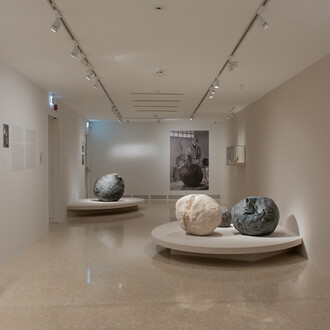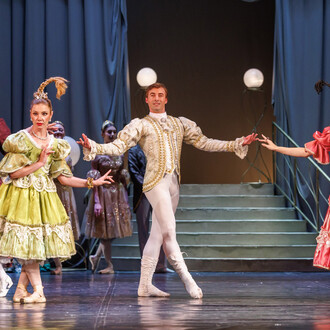At the twenty-ninth Venice Biennale in 1958, an artist from the Italian region of the Marches, Osvaldo Licini (1894–1958) was awarded the Grand Prize for painting, a homage to one of the most original and elusive personalities of the Italian art scene of the first half of the twentieth century. Sixty years after that important recognition and his death, the Peggy Guggenheim Collection commemorates the great master with the long-awaited retrospective curated by Luca Massimo Barbero.
Eleven exhibition galleries and over one hundred works retrace the disruptive and tormented artistic path of this artist, whose career was characterized by moments of crisis and seemingly sudden stylistic changes. Osvaldo Licini. Let Sheer Folly Sweep Me Away intends to convey the substantial coherence of this path. Apparent breaks are actually the stages of a singular experience that stand out in the history of twentieth-century art for their absolute lyricism and poetry.
The exhibition begins with his first figurative phase of the 1920s, inspired by the landscapes of the Marches, those hills to which Licini consistently returned in his painting, as seen in Landscape with Man (Montefalcone) (Paesaggio con l’uomo [Montefalcone]) from 1926 and Landscape of the Marches (The Trough) (Paesaggio marchigiano [Il trogolo]) from 1928. These views with their curved horizon line are the background in the subsequent transition from figuration to abstraction of the early 1930s, seen in Imaginary Landscape (Billy Goat) (Paesaggio fantastico [Il capro]) from 1927. In the 1930s Licini turned to nonfigurative work and partook in the cultural ferment of 1930s Milan, the driving force of Italian abstraction and Rationalism. It was inevitable that he would become involved in the activities of the Galleria Il Milione. Licini’s abstract language is atypical, attentive to geometry. It is a geometry that is permeated with lyricism and turned into sentiment, evident in works like Castle in the Air (Castello in aria) from 1933–36, or Obelisk (Obelisco) from 1932.
Such a particular stance could only attract equally sophisticated collectors and the interest of many Italian intellectuals. Licini’s career and masterpieces dedicated to the Flying Dutchmen, Amalasunthas, and Rebel Angels hang in “unstable balance” (the title and subject of various works of the 1930s) between abstraction and representation. Licini’s most iconic works are those dedicated to the subject of Amalasuntha, presented as a group at the Venice Biennale in 1950. The numerous Amalasuntha paintings on exhibit present the many facets of Licini’s personality, from the lyrical and contemplative side to the more ironic and irreverent one. In the works created since the late 1940s, themes, styles, and unresolved thoughts on painting all converge and make Licini emerge as a great protagonist of Italian and international modernism, as confirmed by the award conferred a few months before his death at the Venice Biennale in 1958.














